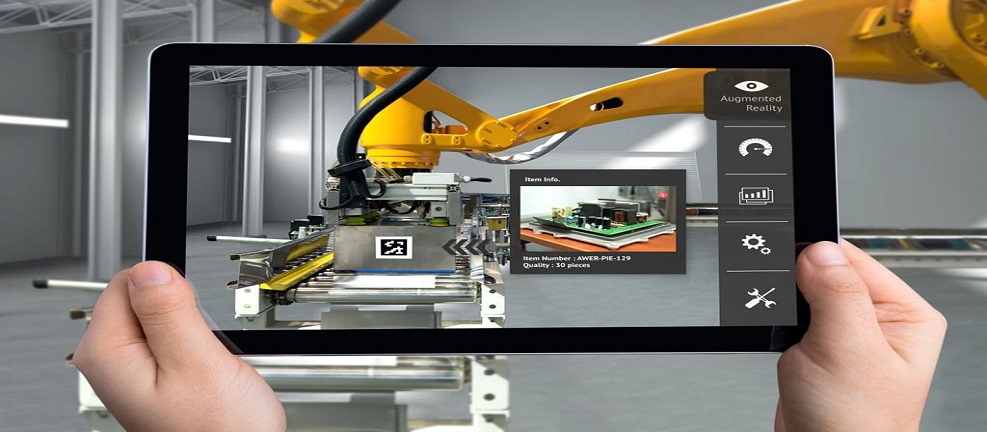What is Augmented Reality? A Deep Dive into a Revolutionary Technology

Imagine visiting a museum where the skeletal remains of a long-dead fish spring to life on your mobile screen, fully fleshed out. Or consider chasing fictional Pokemon characters on your neighborhood streets through your smartphone. Picture doctors performing complex surgeries on virtual human bodies without a single drop of blood. These scenarios, once confined to the realm of science fiction, are now possible thanks to Augmented Reality (AR).
AR is not just a technology; it’s a bridge between the digital and physical worlds, reshaping how we perceive and interact with our environment. In this blog, we’ll explore the definition, mechanics, and applications of AR while uncovering its transformative potential.
Definition: Augmented Reality is the integration of digital information with the user’s real-world environment in real-time. This overlay of computer-generated content enhances the user's perception and interaction with their surroundings.
How is AR Different from Virtual Reality (VR)?
While AR overlays digital elements onto the real world, VR creates an entirely simulated environment where everything is computer-generated. In essence:
AR: Enhances reality by adding digital components to real-world settings.
VR: Replaces reality with a completely virtual world.
The process of creating AR involves two core components: Input and Output.
1. Input
AR begins with capturing the real-world environment, typically through a camera or sensor. The input can be categorized into two types:
Marker-Based Input: In this method, specific markers (e.g., QR codes or predefined patterns) serve as reference points for overlaying digital content. The computer recognizes these markers and generates precise virtual elements based on their position and configuration. Example: Museums using AR apps to bring exhibits to life.
Markerless Input: Here, the system relies on sensors and image processing techniques to understand the real-world environment without predefined markers. This approach uses algorithms to calculate the placement of digital content dynamically. Example: The game "Pokemon Go."
2. Output
Once the input is analyzed, the computer generates digital overlays to enhance the real-world view. The output devices used to display AR content include:
Head-Mounted Displays (HMDs): Devices like AR helmets and glasses worn on the head.
Handheld Displays: Smartphones and tablets that render AR visuals.
Virtual Retinal Displays: Project images directly onto the retina.
Contact Lenses: Experimental devices under development to bring AR closer to our vision.
AR systems are not limited to basic input-output mechanisms. Interaction can be further refined through:
Speech Recognition: Voice commands to control AR applications.
Gesture Control: AR systems can interpret gestures through:
Visual Detection: Cameras and image recognition to track hand or body movements.
Wearable Sensors: Devices like AR gloves embedded with sensors to detect motion.
AR is no longer confined to gaming and entertainment. Its potential spans diverse industries, enhancing daily life and professional activities. Some notable applications include:
1. Education and Training
Museums use AR to animate exhibits, offering immersive learning experiences.
Medical students and surgeons use AR for detailed anatomy visualization and practice surgeries on virtual bodies.
2. Gaming and Entertainment
Games like "Pokemon Go" blend real-world settings with digital characters, creating a thrilling experience for players.
AR-based escape rooms and interactive storytelling bring narratives to life.
3. Retail and E-Commerce
Virtual try-ons for clothing, accessories, or makeup using AR mirrors.
Enhanced product visualization, allowing customers to see how furniture fits into their homes.
4. Healthcare
Augmented diagnostics and surgical planning.
Physiotherapy and rehabilitation programs using AR-guided exercises.
5. Real Estate and Architecture
Interactive 3D models of buildings and properties.
On-site visualization of designs during construction.
6. Manufacturing and Maintenance
AR guides technicians with step-by-step instructions for complex repairs or assembly tasks.
Real-time overlays for machinery diagnostics.
1. Components of AR Systems
Creating AR experiences requires several technologies working in unison:
Cameras and Sensors: Capture the physical environment.
Processors: Analyze input and generate appropriate digital overlays.
Displays: Render the augmented content.
Software: Algorithms and platforms that enable AR development (e.g., ARKit, ARCore).
2. Key Technologies Enabling AR
SLAM (Simultaneous Localization and Mapping): Builds a map of the environment while tracking the user's position.
AI and Machine Learning: Enhance AR’s ability to recognize objects, predict user intent, and adapt interactions.
5G Connectivity: Provides the low latency and high bandwidth needed for real-time AR applications.
AR is poised to become an integral part of everyday life. Emerging trends include:
AR in Wearables: From smart glasses to contact lenses, AR hardware is becoming more accessible and user-friendly.
AR in Social Media: Platforms like Instagram and Snapchat are leveraging AR filters for engagement.
AR for Remote Work: Virtual collaboration spaces using AR will redefine workplace dynamics.
AR in Navigation: Augmented directions for driving, walking, or cycling.
With advancements in hardware and software, AR will continue to push boundaries, blending the digital and physical worlds in ways we have yet to imagine.
Virtual Delivery Centers (VDCs) revolutionize how complex IT projects are managed. By leveraging remote teams and cutting-edge tools, VDCs simplify the most intricate projects. Here’s how:
Access to Expertise: VDCs provide pre-vetted professionals specialized in diverse technologies and methodologies.
Cost Efficiency: Save up to 70% on project costs by utilizing distributed teams.
Scalability: Adjust team sizes and expertise dynamically based on project phases.
Faster Delivery: With global teams working around the clock, project timelines shrink significantly.
Streamlined Processes: VDCs bring structured methodologies, ensuring consistency and quality.
Partnering with a VDC enables IT leaders to focus on strategic objectives while experts handle the complexities of execution.

For modern telecom enterprises, delivering exceptional QoS is no longer optional—it’s a brand differentiator and a strategic lever for growth. Static provisioning models won’t cut it in a world of hyper-dynamic data usage.